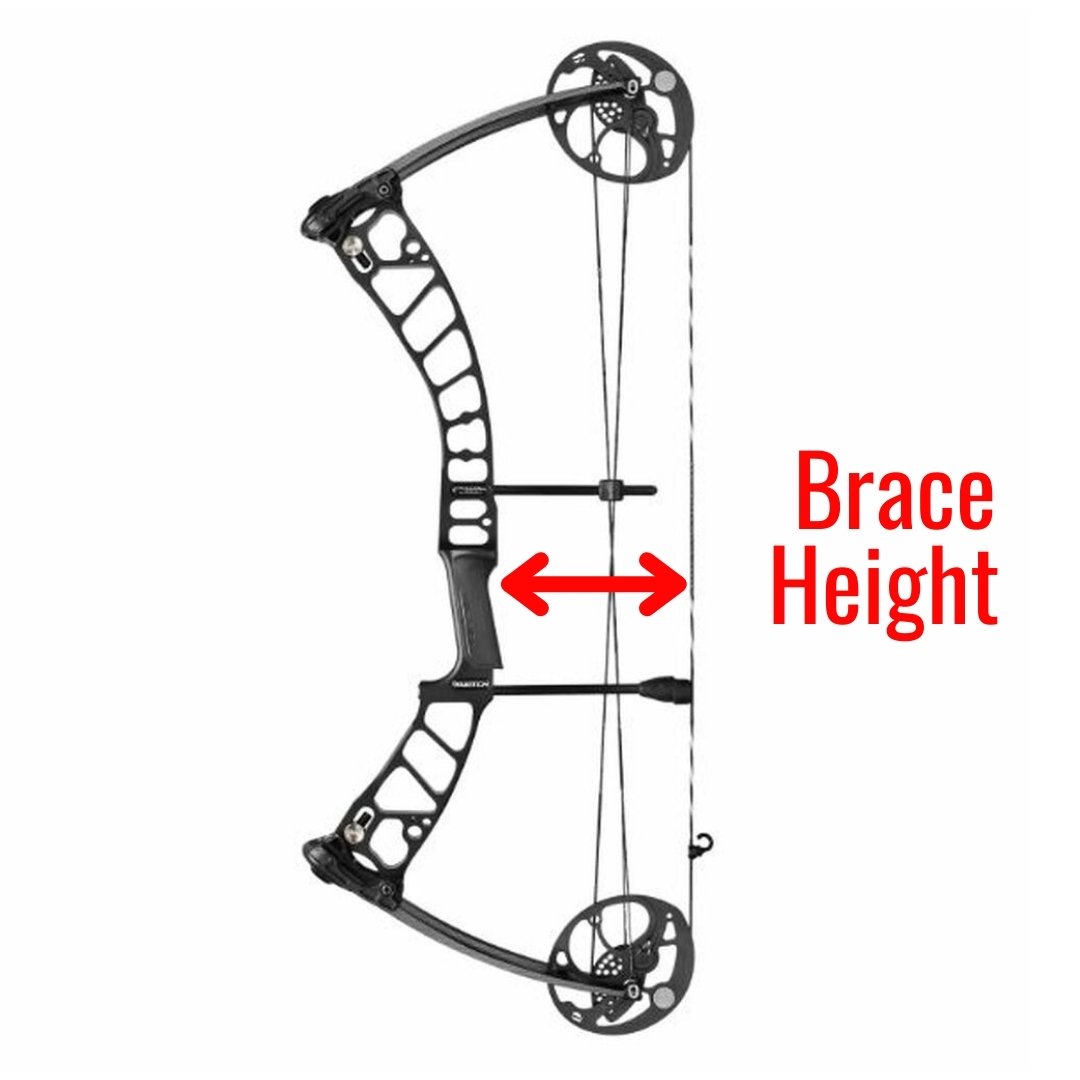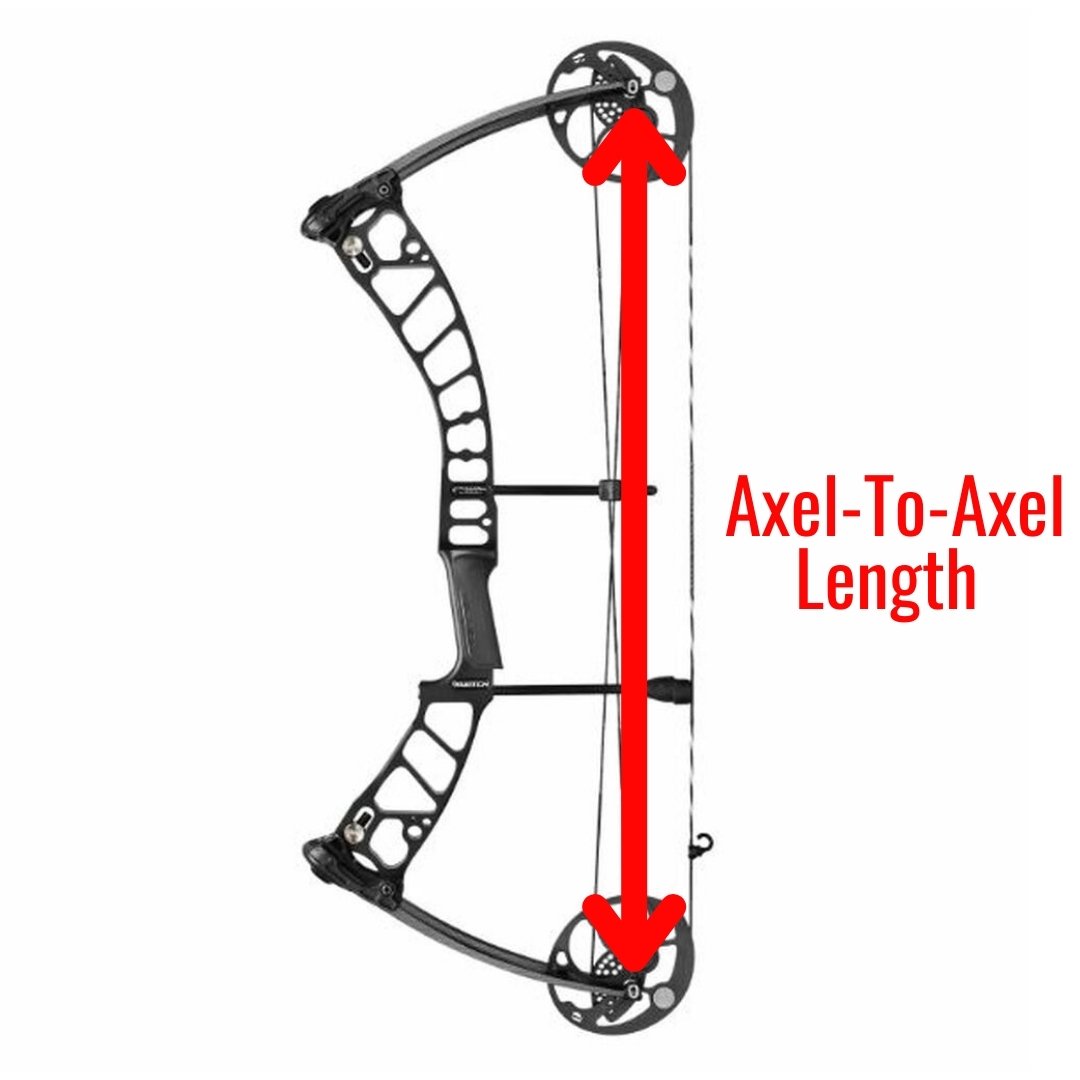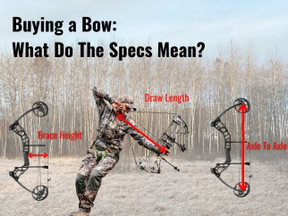Posted by Archery Country on Nov 9th 2021
Buying a Bow: What Do The Specs Mean?
When buying a new bow there is a lot that needs to be taken into consideration to find the right bow for you. Looking through all the features and specs of a bow can be overwhelming if you don’t know what each of the specs mean and how they affect a bow's performance. We will break down the common bow specs for you so you can better understand which bow may be a good fit for you.
Brace Height
Brace height is the length from the deepest part of the bow's grip to the string. A longer brace height generally gives you a more forgiving geometry of the bow riser, which will make it easier to repeat your shot each time. A larger brace height will also give you more room for your arm and clothing to not hit the string when you are shooting. Disadvantage is that with a longer brace height your arrow is spending less time on the string which will give you a slower arrow speed. Generally speaking an inch of brace height or an inch of extra draw length will affect your arrow speed by approximately 10 fps.

IBO Rating or ATA Rating
This is a standard test that manufacturers can run to determine the maximum arrow speed for specific bow models. The results are measured in FPS or feet per second.
Want to know more about what the standard test is? Read more here: What is IBO speed? - Archery Country
Axle-To-Axle
Is the length measured in inches from the top axle to the bottom axle. The axle of a bow is the rod that goes through the center of the cam and attaches to the bow limbs.
The best axle to axle length for you is going to be determined by the situation in which you’ll be using the bow and your skill level: Are you bowhunting in a stand or ground blind? Are you an indoor target archer? Do you struggle keeping your bow stable? Historically a longer axle to axle length has been better for stability and a shorter axle to axle length has been better for arrow speeds and mobility in the field. Your draw length will also have some influence on what axle to axle you might want. A longer draw will make a more severe string angle at a given axle to axle then a short draw length. So generally speaking an individual with a longer draw will prefer a longer ATA.

Let-Off
The let off for compound bows is given in a percentage. That percentage is the amount of draw weight that will be reduced at full draw. For instance, if a bow has a 60 pound draw weight with 80% let off at full draw the archer would have to hold back roughly 12lbs. So 80% of the bow's draw weight is “let-off” at full draw. Like everything there is a give and take, a higher let-off will make it easier to hold your bow back where a lower let-off will make it easier to hold your bow’s physical weight up. Hunters usually prefer an 80-85% let off where target archers a lower 65-70% let-off.
Draw Weight
This is the force that it will take to draw the bow back. Oftentimes a bow made for youth or beginners will have a range of draw weights so they can easily be adjusted for those who are building up their draw strength. Like this bow:
Other bows will list draw weights that they offer for that bow. These bows can have their draw weight lowered (usually no more than 5-10 pounds depending on the bow) but perform best when their draw weight is set at its maximum. Pictured below:
Draw Length
This spec is the range of draw lengths in inches that the bow can be used at.
Draw lengths are specific to each archer because it’s a measurement of how far you pull back your bow.
If you are new to archery and don’t know your draw length a good way to get a ballpark estimate is to have someone measure your wingspan and divide it by 2.5. Then, come to an archery pro shop, try out a bow with that draw length and have an expert watch as you shoot to check that the draw length fits you. Getting the correct draw length is a combination of your bow's draw, your D loop and release. All those things affect draw length. Getting your draw length right is very important for keeping consistency in anchor points and shooting form.

Physical Weight
This is the actual weight of the bow without accessories on it. So remember this is the starting point, the weight will go up when you attach your sight, rest, stabilizer and quiver to it.
All of these bow specs are important to consider when purchasing a compound bow but the best way to know what bow is right for you is to shoot the bows that you’re considering purchasing.
If you live in the Midwest come check out our archery pro shops. We have a large selection of different brands of bows so stop in or save time by scheduling a demo of the bows you’re interested in. It’s important to us that whether you are buying online or in-store you find the right bow for you so if you have any questions feel free to ask our experts!

